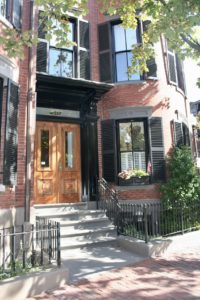 Boston has some of the oldest housing in the country. Massachusetts housing started as single-family homes and was later converted into apartments, condos, or rooming houses. If you mention rooming dwellings, most of the general public has no clue what they are or how they differ from renting a standard apartment.
Boston has some of the oldest housing in the country. Massachusetts housing started as single-family homes and was later converted into apartments, condos, or rooming houses. If you mention rooming dwellings, most of the general public has no clue what they are or how they differ from renting a standard apartment.
Rooming House History
Rooming houses became more common in the 19th century. They allowed owners to make extra money. At one point in Boston’s history, between a third and a half of the city lived in Rooming houses. Some rooming houses were for women only, and others were for men. Most were for men, but the YMCA provided heavily supervised boarding homes for young women. There were some for families, but they were less common. Boarding or rooming houses made it affordable for people to move into the city.
Regulation
In 1936, FHA Property Standards defined a dwelling as any structure used principally for residential purposes. This definition did not include commercial rooming houses or tourist homes. Dwellings did not have a private kitchen and a private bath that reformers viewed as essential in a proper home.
As a result of the 1936 definition, boarding houses became less common in the early 20th century. The boarding house was also impacted by mass transit development. Mass transit options improved for the public. Transit made it more feasible for more city residents to live in the suburbs and work in the city.
In the 1930-1940s, the popularity of rooming houses became less common. By 1950, the housing boom hit, and the middle class could increasingly afford their own homes.
Rooming House Vs. Standard Apartment
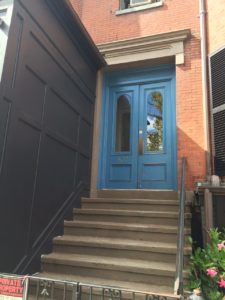 Today, Rooming houses are still around in Massachusetts and are great options for anyone. However, they do have limitations that people need to be aware of. First off, renting houses, your landlord can’t just rent out there a place like they can a standard apartment. The landlord, if they have a rooming house, must have a lodging license, and all available for rent must meet health and safety standards and be well maintained.
Today, Rooming houses are still around in Massachusetts and are great options for anyone. However, they do have limitations that people need to be aware of. First off, renting houses, your landlord can’t just rent out there a place like they can a standard apartment. The landlord, if they have a rooming house, must have a lodging license, and all available for rent must meet health and safety standards and be well maintained.
Regulations and Standards
Correct unhealthy conditions, like mice, rats, bedbugs, or cockroaches.
Make needed repairs without charge unless you caused the damage.
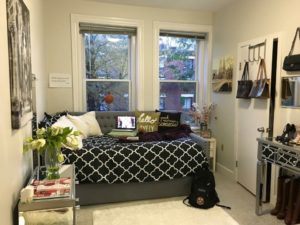 Get your permission to enter your room to make repairs—unless it is an emergency. Give your privacy. The landlord is only allowed to enter the room if permission is given. The only exception is if there is an emergency or if they have a court order. Landlords can’t lock a tenant out of the room. If a landlord must evict you, they must get a court order and can’t hold onto your belongings.
Get your permission to enter your room to make repairs—unless it is an emergency. Give your privacy. The landlord is only allowed to enter the room if permission is given. The only exception is if there is an emergency or if they have a court order. Landlords can’t lock a tenant out of the room. If a landlord must evict you, they must get a court order and can’t hold onto your belongings.
Rooming House Requirements
 A landlord must provide a toilet, washbasin, and a shower or a bathtub for every 8 rooming house occupants. If the bathroom is shared, the landlord is responsible for cleaning them every 24 hours. Private bathrooms can be found in a rooming house, but unlike shared bathrooms, the landlord is not responsible for ensuring they remain clean while renting by a tenant.
A landlord must provide a toilet, washbasin, and a shower or a bathtub for every 8 rooming house occupants. If the bathroom is shared, the landlord is responsible for cleaning them every 24 hours. Private bathrooms can be found in a rooming house, but unlike shared bathrooms, the landlord is not responsible for ensuring they remain clean while renting by a tenant.
Under state law, an owner of a rooming house is not required to provide cooking facilities. However, suppose the owner chooses to provide common cooking facilities. In that case, they must include a sink, a stove, an oven in good repair (unless you agree to give the stove and oven in a written lease agreement), space for food storage, and a refrigerator. A rooming house owner can provide individual cooking facilities only in rooms with a floor space of at least 150 square feet.
If an owner provides individual cooking facilities, they must include a gas or electric plate, a refrigerator, and a sink with hot and cold running water. 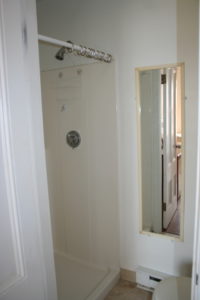 If the space you rent has cooking facilities and 2 adjoining rooms, then the landlord must provide gas or electric range, a refrigerator, a sink with hot and cold running water, and storage area for your food. Microwave ovens are also permitted in lodging house rooms and common areas.
If the space you rent has cooking facilities and 2 adjoining rooms, then the landlord must provide gas or electric range, a refrigerator, a sink with hot and cold running water, and storage area for your food. Microwave ovens are also permitted in lodging house rooms and common areas.
Occupancy rules and Leases
Rooming houses often restrict how many people can live in the studio, and they are usually single occupancy. Single occupancy also means having friends, family or significant other spending the night. Traditional studios often do not have that restriction. Traditional studios often also have a sink, fridge, and sometimes an entire oven or cooktop. A rooming house may not have more than a microwave, toaster oven, and mini-fridge. In rooming houses, each person has a lease with a landlord. Leases can be anywhere from 1 month or longer. Rooming houses must adhere to the disability act and can’t discriminate based on sex or race. Some landlords have income requirements, including credit history and past references.
Day to Day living
Day-to-day living is pretty much the same in a rooming house. You are responsible for maintaining your space. There is no hall monitor asking you to check in. You can come and go as you please. Some buildings even have laundry facilities. Every person in the building adheres to the same rules and regulations. Every person who applied for a unit must meet the same requirements.
Where Can I Find Rooming Houses in Massachusetts?
Rooming houses are rare but can be found in South End, Salem, and Lowell. They can be a very flexible option for anyone who can’t make long-term committed plans. Some people find it works great, especially if they are working in one city and living in another.
627 Tremont Street
The South End used to have many rooming houses but now only has a few. One of those rooming houses is located at 627 Tremont Street. Many people living in the building are very successful, hardworking people. I have a client who is renting at 627 Tremont Street. He works in the financial district Mon-Friday, and his family lives in Connecticut outside of Hartford. Tired of the commute to work from Connecticut every day, he decided to rent at 627 Tremont, which was a better solution. Mon-Thurs. he rents at 627 Tremont Street. Friday to Sunday, he stays in Connecticut, spending it with his wife and children. I had another client who still calls 627 Tremont Street home, where he had a great paying job in the south end but ran into some financial issues and screwed up his credit, and was too old to do the roommate route. The client has been there for five years, and the landlord can’t see him ever leaving the building. Another client called 627 Tremont Street home while her current home was under renovation. She called the place home for 8 months. They all wanted a place that offered a central location but allowed them the flexibility a traditional rental couldn’t provide.
627 Tremont Location
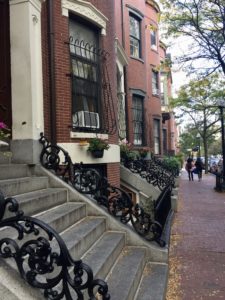 If you’re looking for space you truly don’t have to share with anyone and don’t want to hold onto a lot of stuff a rooming house can be a great solution. 627 Tremont Street is also a great place to live since it is right near all the best restaurants. So, one might say who cares I can’t cook a gourmet meal I can go out and have someone cook and clean.
If you’re looking for space you truly don’t have to share with anyone and don’t want to hold onto a lot of stuff a rooming house can be a great solution. 627 Tremont Street is also a great place to live since it is right near all the best restaurants. So, one might say who cares I can’t cook a gourmet meal I can go out and have someone cook and clean.
There is no parking available at 627 Tremont Street, but there is plenty of resident street parking. The south end is a very walkable area, and it is close to Back Bay, where you can find the Green, orange, and Silver Line and buses. South End also offers the Silver Line and buses.
Want more information
One of the best things about living in a rooming house is it will force you to get to know your neighborhood its around and isn’t that what city living is all about? Getting to know your neighborhood? If you want to know if there are units available at 627 Tremont Street or have questions about living in a rooming house, contact me.
Getting to know your neighborhood? If you want to know if there are units available at 627 Tremont Street or have questions about living in a rooming house, contact me.



Leave a Reply